Wax begonia leaves can turn brown over winter when the weather turns cold or if they are exposed to frost. Fungal attack, sunburn, insects damage, overwatering, a lack of nitrogen or a lack of water can also cause the leaves to turn brown. Prune wax leaf begonias back to a healthy growth node in spring to remove brown leaves and promote new growth.
This article will explore the top causes of brown leaves on begonias and what you can do to fix your plant.
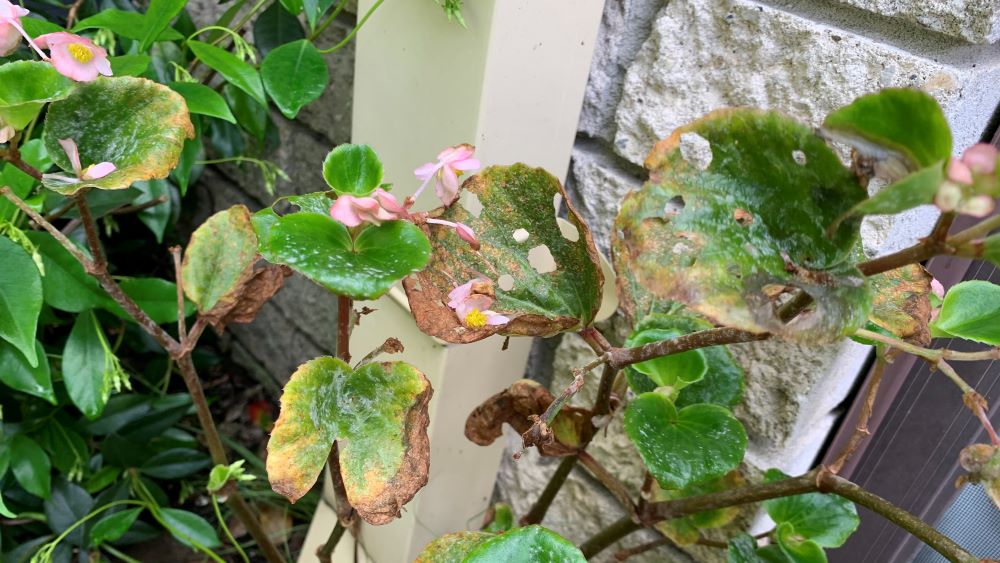
7 Causes of brown leaves on wax begonias
Check the top causes of brown leaves on begonias.
1. Cold weather in winter
Begonias will die back in the cold winter months. Their leaves will natural turn brown and yellow when temperatures get below 60 degrees Fahrenheit. In warmer climates that can grow all year while in cold areas they are usually an annual.
These plants come from Central and South America so love a warm, humid climate and mild winters. Cold weather will damage their leaves and cause them to turn brown.
Begonias can be bought inside during the cold months and grown as an indoor plant. This will protect their leaves from the cold weather. Place them in a bright position out of direct sun and they will be happy.
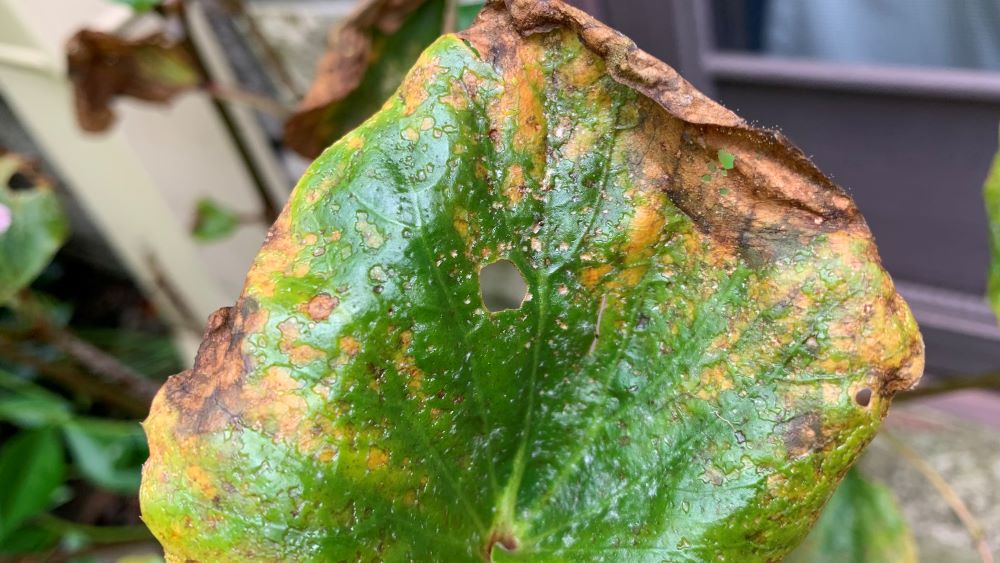
2. Frost damage
Frosts will damage wax begonia leaves causing them to turn brown or yellow on the edges. Heavy frosts can cause the whole leaf and stem to die back.
It is best to leave damaged leaves and stems on the plant until frosts have passed. When the weather has warmed in spring you can removed any damaged parts of the plant.
Trim off stems down to the nearest healthy growth node. Wax begonias will grow new stems and leaves to replace them.
3. Sunburn
Sunburn is another common cause of brown leaves on wax begonias. Direct, hot summer sun can burn the delicate leaves causing damage on the leaf edges.
I like to protect my begonias from the afternoon summer sun. Plant them in an area of your garden that gets afternoon shade to avoid sunburn.
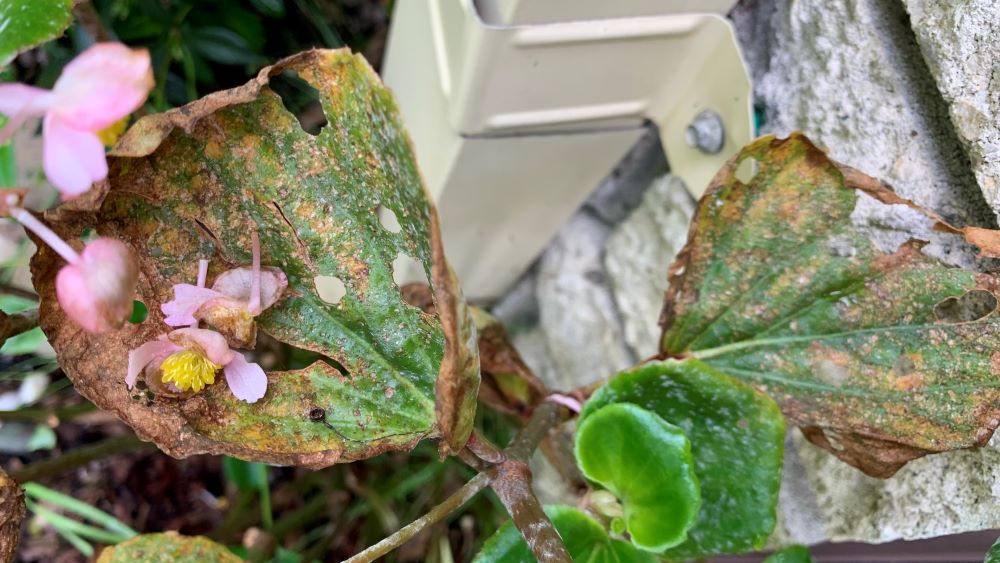
4. Fungal attack
Sooty mold is a common fungus that can grow on wax begonia leaves over winter. Fungal growth will occur on leaves when the weather is cold, if you have high rainfall or if you water directly onto the leaves.
Water begonias near the base of the plant, around the root zone to avoid getting water on the leaves to promote mold growth. Surround the plant with bark mulch to stop mold spores from being splashed from the soil on the leaves.
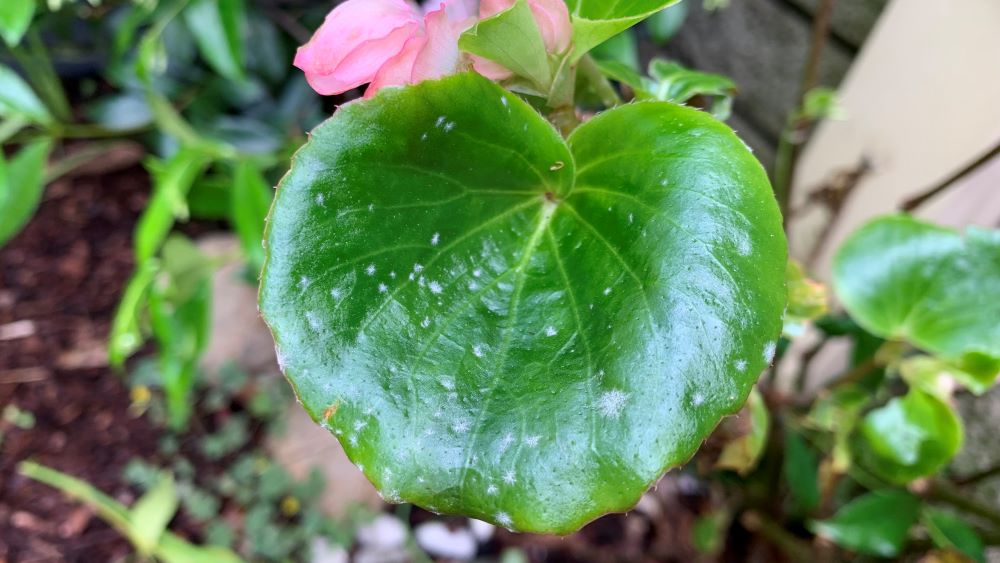
5. Insect damage
Wax begonias can be attacked by insects causing their leaves to turn brown. During winter and early spring, snails, slugs, and caterpillars and sap sucking insects such as aphids and thrips can attack the leaves.
I prefer to leave my plant over winter and remove any damaged leaves and stems in spring. The plant will bounce back quickly, resprouting new leaves and stems to replace the damaged ones.
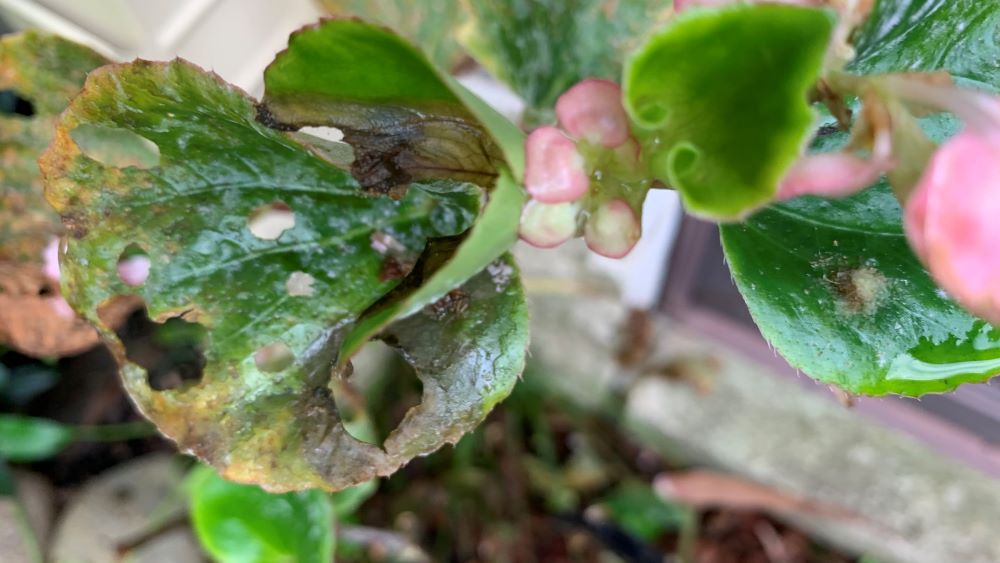
6. Overwatering
Begonias that are overwatered can develop brown leaves. This can be because of fungal root rot or a lack of nutrients such as iron or nitrogen.
Overwatered begonias often start off with yellowing on their leaves that will quickly turn brown. Begonias like regular water but too much can starve the roots of air and nutrients.
Water begonias every 2-3 days deeply in summer and reduce this in the cooler months.
7. Lack of water
A lack of water can also cause begonias to develop brown leaves. Begonias like regular water and humid conditions. They can quickly dry out in the hot weather.
Mulching around begonias is a great way to keep the soil moist for longer. I like to use bark mulch because it breaks down slowly and feeds the soil. Check the soil with your finger and if it feels dry 1-2 inches down, water your begonias.
How to save a begonia with brown leaves
Here are some easy tips to help to save your begonia with brown leaves.
1. Prune back to a healthy node in spring
Begonias are prone to developing brown leaves over winter. Once spring arrives you can prune your begonias back to the first healthy node. It may look harsh but this will promote new growth in spring.
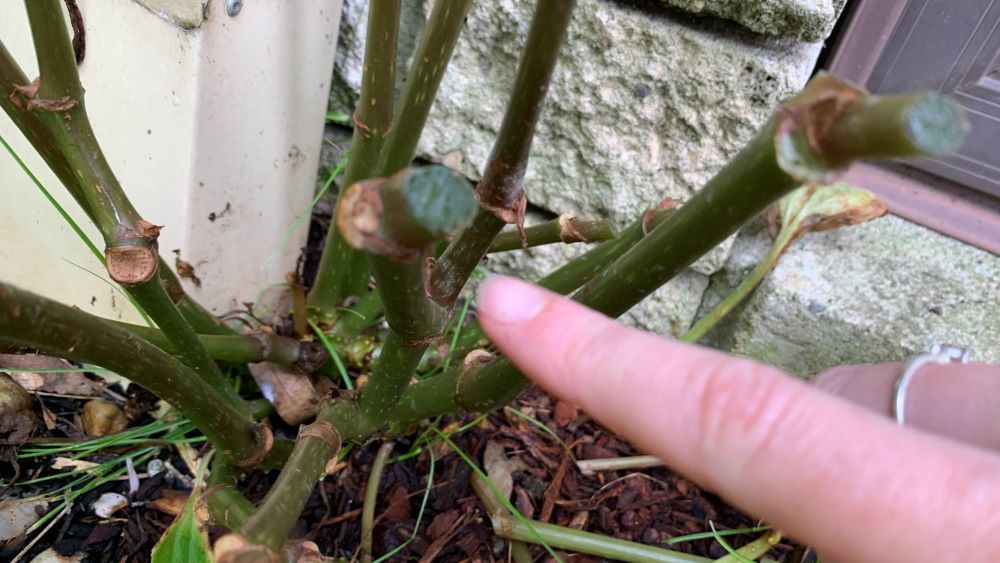
2. Remove weeds
Remove any weeds growing near your begonias. This will reduce competition for water and nutrients.
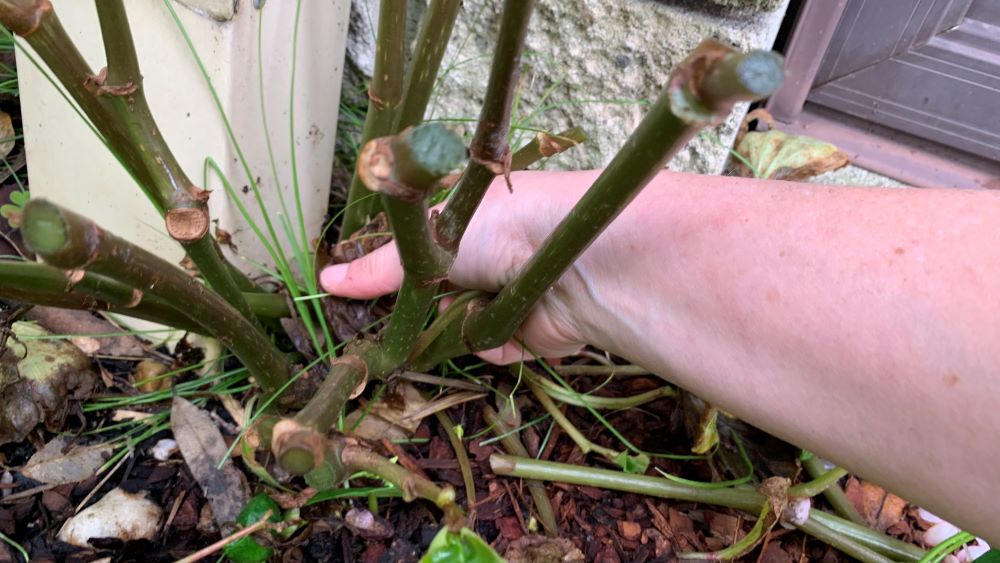
3. Remove brown leaves
Trim off any old, dead brown leaves with sharp secateurs. This will help to allow light in to reach healthy green leaves.
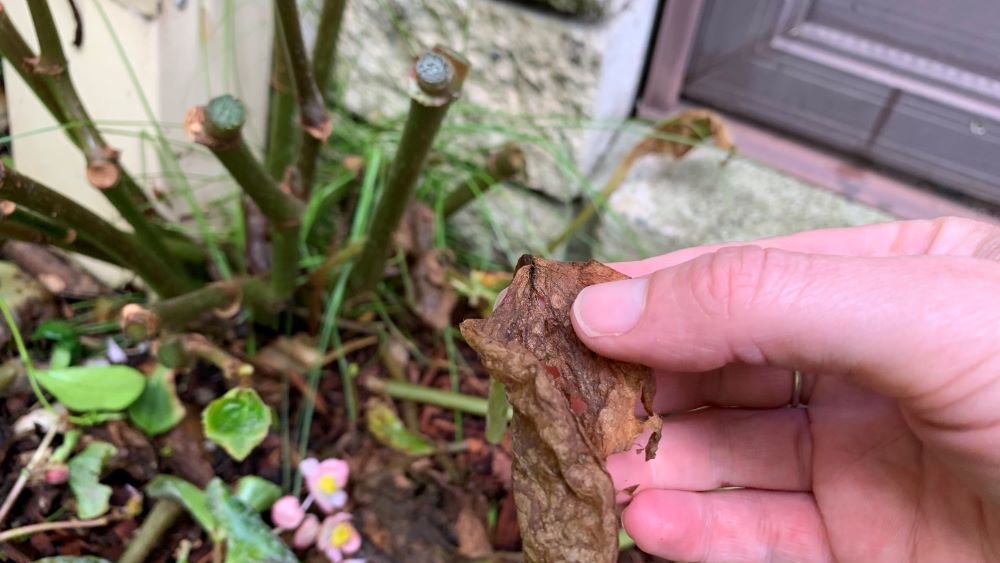
4. Fertilize with pelleted chicken manure in spring
Wait for around 2 weeks after pruning and then feed your begonias with pelleted chicken manure. Water it in to help to give the plant the nitrogen it needs for new growth.
5. Water deeply and regularly
Begonias like regular water so make sure to deep water them 2-3 days in summer. This will help them to send down deep roots to stabilize the plant and to reach deeper ground water and nutrients.
Check out this quick video on caring for begonias.
Summary
Brown leaves on wax begonias are often caused by weather conditions such as extreme cold or even sunburn. Wax begonias need regular water, nitrogen fertilizer in spring and a good prune after winter to keep them growing strong and to avoid brown leaves.
Happy growing.
I am an accredited practicing dietitian, experienced gardener and a dedicated cook. I love writing and sharing my experience so you can learn from my successes and mistakes.
